- How to Grow a SaaS (Software) Business FAST - February 10, 2025
- 6 Advanced SEO Tips to Dominate the Search Rankings in 2025: Informed by Our Biggest Clients - January 17, 2025
- 7 Advanced Tips for Companies Spending $1M+ on Google Ads - December 10, 2024
SaaS companies are absolutely everywhere.
There are 10s of thousands of them, and the software-as-a service industry is growing at 13.1% per year. That means new companies are launching every day and entrepreneurs have the opportunity to grab their piece of this huge pie.
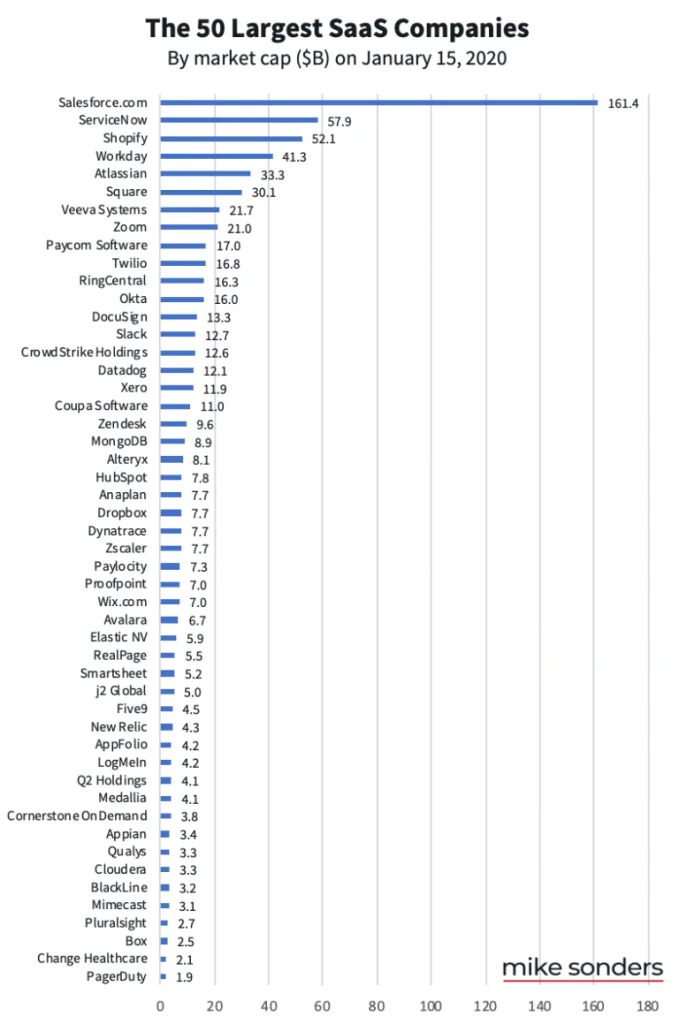
If you’re a SaaS entrepreneur, you need to focus on three things:
- Acquiring customers: getting new leads/customers in the door
- Retaining customers: getting customers to renew subscriptions
- ARPU: Maximizing your average revenue per user (ARPU)
This guide has the acquisition tactics you need to know, plus the revenue-driving hacks that’ll help you get the most out of every user.
The playbooks that worked in 2020—like pouring money into paid acquisition or relying on aggressive outbound email motions—simply don’t deliver the same ROI anymore.
I’ve studied the patterns behind today’s breakout successes at companies like HiBob, SentinelOne, Cube, Sigma, Opus, SmartRecruiters, and more. What I’ve found is that the companies winning in 2025 are doing a few key things differently.
Enjoy!
Looking to grow your SaaS? Growth Marketing Pro is the ultimate SaaS marketing agency!
Table of Contents
The 7 Best Ways to Acquire Customers for Your SaaS Business
If your SaaS product is brand new or you’re already generating millions in revenue, new customers are the lifeblood of your business.
Of course, you need to keep your existing customers happy and renewing (maximizing LTV), but if you don’t get new ones in the door, you’ll eventually stop growing. So, in addition to building a great product that the world needs, you have to get more leads and turn those leads into paying customers.
Pick from these tried and true tactics…
1. Direct sales
A good product should sell itself.
Companies like Atlassian intentionally shied away from hiring a massive sales force in order to create a product that sold itself and was mostly self-serve.
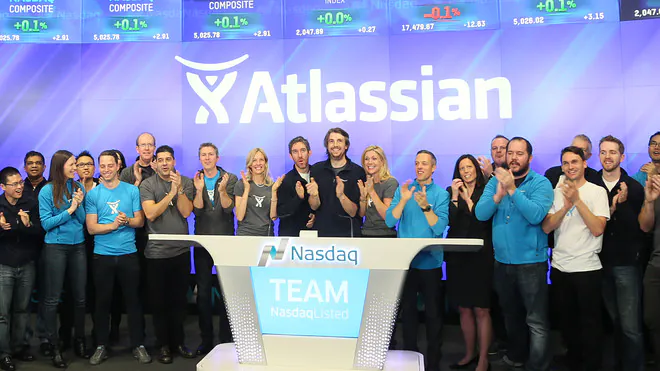
That’s well and good, but direct sales works (Atlassian has since hired a large sales team). Sure, it’s not sexy or automated, but direct sales brings in highly-qualified customers that are likely to stay for the long term.
If you have a SaaS product that generates over a couple hundred dollars per month per customer, you make enough revenue per user to justify a sales function.
Oftentimes, the first salespeople are founders of the company. Not only will speaking with customers help you sell the product, it will help you refine your product offering… So go ahead and sell!
And if you haven’t tried selling yet, maybe you should.
I love reading about other entrepreneurs. Have you heard of ConvertKit?
The email provider now makes $10s of millions in recurring revenue per year. But in the early days founder, Nathan Berry could hardly get his company past $2,000/month. He toiled away for years but couldn’t make it work.

In a last ditch effort to save ConvertKit, he turned to direct sales. He started Skyping with bloggers (ConvertKit’s customers) and found that they simply thought it was too hard to switch from Mailchimp to ConvertKit. As such, he started offering “free migrations” to ConvertKit. Lo and behold, it worked and the rest is history.
If you’re just dipping your toes into direct sales, you can start by identifying your target customer. Once you’ve done that, find a list of those folks:
- Identify a group on LinkedIn or Facebook where they might be active
- Identify a job title on LinkedIn that will contain a large number of perspective customers
- Buy a list from a list broker
- Or perhaps you have an existing email list
Once you have a list, this is how to do sales prospecting correctly:
- Hire a virtual assistant on Upwork to enrich the list — your VA should find the email addresses, companies, job titles, and anything else you think might be helpful in your selling process. Tell them to maintain the list in a Google Sheet or Excel doc.
- Then use a tool like Yesware to reach your prospects in an automated way. It’s an email plugin that “sits atop” your normal Gmail account and allows you to send ~200 email per day to your prospects with various campaign triggers, merge fields and more.
- To begin sending emails, you will create Yesware email templates and sequences. Then, simply upload a CSV of your leads to begin sending at a rate of messages per day that you specify.
- Also, don’t shy away from LinkedIn. It’s a goldmine. Plus, responses on LinkedIn InMail are 10-25%, much higher than email.
- There is no right way to make sales prospecting campaigns. Every industry is different and the messaging and targeting has usually been tweaked over months of feedback and response data.
Below is a sales email I recently received. I think it did the trick nicely.

Always make sure to have a call to action. “Would you like to jump on the phone?” is usually a pretty good one.
If you’re trying to accelerate customer acquisition for your SaaS business, you need to give direct sales a try.
Also read: The Best CRM Software Tools or The Ultimate List of SaaS Statistics
2. Search Engine Marketing (Google Ads)
If there’s search volume for the product you sell, you may be able to make Google Ads work for your business.
Google Ads is an auction. That means you bid on keywords at a price per click (CPC) you’re willing to pay. Your competitors do the same. Whoever bids the highest, shows the highest in the search engine results page (SERP). Naturally, these clicks can get pretty expensive. According to WordStream, clicks in the B2B services industries (like software) are $3.33 on average.
In my experience, SaaS companies generally have at least some Google Ads search intent — which means you may be able to spend thousands of dollars per month profitably. That’s like printing money!

To get started, you need to do a few things:
- Tracking: Set up your Google Ads account and make sure your website is set up for conversion tracking with a conversion tracking pixel.
- Brainstorm keywords: To create Google Ads campaigns, you need to bid on keywords — but which ones? That’s where a bit of keyword research comes in. Think about the intent of your users. Software companies generally do well with keywords that contain the keyword “software,” since it’s very bottom-of-funnel search intent. Competitor search keywords also tend to work for SaaS businesses. If you bid on the branded keywords of your competitors, you’re very likely to find some customers who would gladly switch to your service.
- Ads and campaigns: Separate your keywords into themes. You will create a new campaign for each theme. An average campaign will probably contain between 5 and 25 keywords. Each campaign should have compelling ad copy that is relevant to the searchers’ intent.
- Landing pages: Support your campaigns with great landing pages. Landing pages should match the search intent of your Google Ads. While it’s a little painful to make a ton of landing pages, it’s hugely important.
- Launch: Determine your budget, set your geographical location, and set a bid amount. I recommend starting on CPC bidding at a cost near the bottom of the CPC range.
If you’re serious about your campaigns, you might also want to include some sort of email lead capture mechanism on-page. Tools like Leadpages allow you to offer a free guide or course in exchange for an email address. That’s a handy way to make sure you eek every last bit of value out of Google Ads — even when a user doesn’t purchase your product right away.
📚 Also read: The Modern Approach to Dominating Paid Search (7 Ways)
Looking for someone to run your Google Ads. Growth Marketing Pro is the paid search agency trusted by companies like Smartrecruiters, SentinelOne, and Cube.
3. SEO
If Google Ads works for your SaaS business, you simply need to rank organically (using search engine optimization) for those same keywords.
Search engine optimization is—as it sounds—the process of optimizing your site and content with SEO best practices for search engines such as Google. An SEO strategy can really accelerate lead generation for your business if it’s done correctly.
For most SaaS companies, blogging-focused content marketing works very well for acquiring leads. Simply put, more content = more web traffic… which means lots of potential customers to sell your product to.
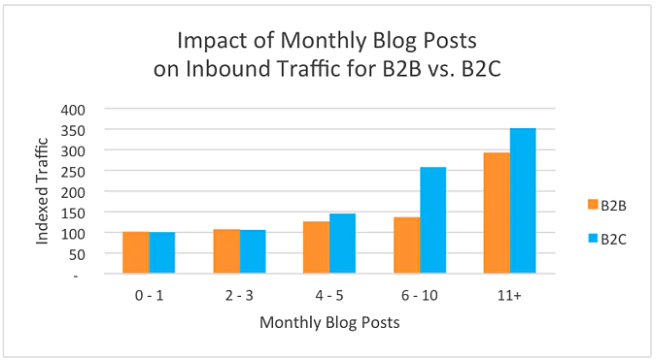
This site is ALL about software, and my partner, Hailey and I have been able to grow it to over 50,000 visitors with incredibly well written, SEO-friendly blog posts.
You can do the same if you follow a few best practices:
- Target keywords that matter: If you’re making Google Ads work, then your first keyword targets should be easy. Just use the same keywords! But beyond those, you should do some intensive keyword research. Keyword research will help you select uncompetitive, highly searched keywords that are specific to your product offering.
- Blog like a startup: If you’re serious about giving SEO a try, you should aim to publish 5 posts per week for a couple of months. With that huge velocity of articles, you will get on Google’s radar as quickly as possible, which will help you prove or disprove SEO as a viable strategy fast. Don’t hesitate to outsource your content creation or use a content generator to move faster.
- But don’t sacrifice quality: Great content matters most. Google will only show readers the best stuff on the internet. Posts need to be insightful, use target keywords, maintain proper internal and external links, as well as have great formatting with headers, images, and easy-to-read font and spacing. In general, posts have the best chance of ranking if they’re over 1,800 words long. Learn more about on-page SEO and great content writing here.
- Get backlinks: Backlinks matter a lot. A great SEO strategy includes backlinking — that is, getting hyperlinks from other authoritative sites on the web to your site. Backlinks show Google that your site contains trustworthy information. There are a number of ways to get backlinks, including PR, guest posting, and plain old backlink outreach. It’s a huge topic. Learn more about how to get backlinks here.
As with Google Ads, try to capture email leads whenever possible on your blog. What good is a lot of web traffic if they never hear from you or get to experience your product?
P.S. Make sure to use WordPress for the blog portion of your site. WordPress naturally organizes your content in ways that optimize for Google’s search engine. This is completely essential if you want to build SEO for your SaaS Business fast.
📚 Also read: 12+ SEO Growth Hacks to 10x Your Traffic
📚 Also read: The 6 Ways We’re Winning With SEO Today (for Clients like HiBob and SmartRecruiters)
4. LinkedIn Ads
SaaS businesses fair extremely well with LinkedIn advertising.
The reason is twofold:
- LinkedIn is an expensive channel. Only B2B companies (like software) can afford to spend $30 to $500 to acquire users (this is the range of customer acquisition costs I have experienced).
- LinkedIn has rich data that is extremely valuable for SaaS companies — like job title, employer, work experience, education, etc. Companies selling to other companies need that info.
LinkedIn’s ads are run on a cost-per-click or CPM (in many cases you choose) basis and an auction system like Google Ads. If you’re bidding more than your competitors, you’ll win the auction and your ad will be served.
There are three main types of ads:
- Sponsored InMail
- LinkedIn text ads
- And promoted content.
There’s one ad unit I highly recommend for SaaS businesses: Sponsored InMail. It has the lowest cost per acquisition of any of the three.
InMail campaigns are very similar to standard LinkedIn InMail you might send to an old colleague, but is automatically delivered to the inboxes of your target audience along with a call-to-action button (+ there is space for a small image ad if you like).
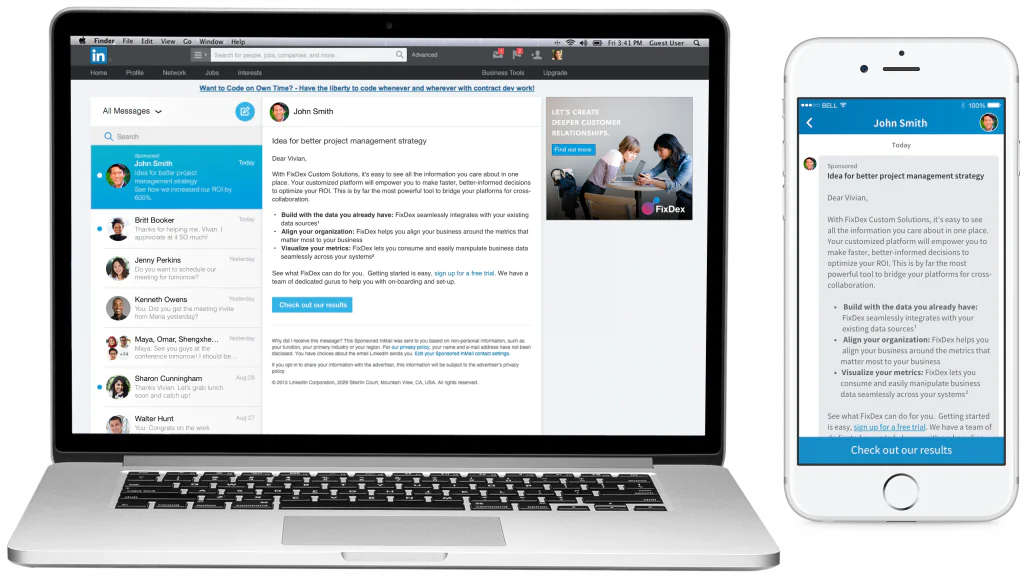
Sponsored InMail is almost as good as a phone call or face-to-face sale.
In my experience, I’ve seen InMail open rates as high as 94%. That’s insane, when you consider you don’t know the prospect you’re approaching.
Also, try remarketing (retargeting) ads on LinkedIn. They’re definitely the most cost-efficient because you’re targeting an audience that already has heard of your product.
LinkedIn’s ad network is powerful. There’s a ton of companies using it, including Adobe, Callaway, Blackrock, Microsoft, Mercedes-Benz, WalkMe and Jira, and if you’re a B2B Saas business, you’re going to want to take the time to invest.
5. PR
PR, or press relations, is one of the most effective ways tech startups and small businesses tell their stories and acquire customers. I know from personal experience that PR can be an absolute goldmine.
If done properly, press can be your most cost-effective and highest converting channel. According to Axia, press placements have 6x the visibility and 3x the credibility of an advertisement.
- Define your Target Audience & Goals
- State your goals. If an ROI positive campaign is your goal, you will need to acquire profitable customers.
- This is when you must define your target customers and publications. Tossing a wide net might get you coverage, but coverage is nothing if you’re not in the right publications, reaching your core customer.
- Brainstorm and Create a Calendar
- You then need to decide which PR stunts or activations are worth pursuing.
- You need creative, attention-grabbing, effective, and timely things to talk about.
- Some ways you can do this is by looking at the schedule of important dates for your industry and line up press activations during those times; pick two to three important topics for each month; and plan to share this content on various social media platforms and through email marketing to further expand the reach of your news by targeting specific communities online.
- Meet the Editors in Your Industry
- Getting in industry-specific publications will help you reach your exact target customer, fast. Getting into these publications is often less competitive so you will see results faster.
- You should target about 20-30 industry-specific blogs and publications every week. Don’t start pitching right away: begin by introducing yourself and your company. At this point, your goal is to get a friendly response to your email so you can gauge their interest and begin developing a professional relationship.
- Land Coverage!
- You’re ready to pitch! First things first: you will get plenty of “no’s.” But, a Harvard Business Review survey concluded that 70% of publishers are open to being pitched on a topic via email as long as it’s within their “beat” (area of coverage).
- Any email outreach should be succinct, show thorough research of the editor, and provide value. Include images, offer product demos, and use quotes from your CEO and other executive team members where you can.
Having a strong presence in the media is crucial, but PR isn’t a sprint. Putting in strong effort over time will pay off! Plus, the links you get from PR placements are beneficial to your SEO strategy as well.
6. Referral program
Referral programs are huge for SaaS companies. You’ve probably seen referral programs if you use Uber, DoorDash, AirBnb, or any number of other services. That “give $20 to your friends, get $20 for you” program is a referral program.
They’re cost effective, they’re easy to make, and you only have to pay for customers that sign up a make a purchase. You’re not spending money on potential customers, you’re spending money on real customers.
One of the easiest ways to create a referral program is by using a referral program software. They’re generally quite affordable and take care of all the mechanics of the program — from customer referral URLs to payments
FYI: Referral programs work better for SaaS products geared toward small businesses, rather than enterprise clients. It’s pretty tough to ask your contact at IBM or Amazon to refer their friends for a fee… it just doesn’t make a whole lot of sense.
7. AI
No conversation about modern SaaS marketing approaches would be complete without mentioning AI.
Customer acquisition costs (CAC) have skyrocketed in the past five years. The companies that are scaling efficiently are leveraging AI to bring down costs in a few critical areas:
- AI-powered ad targeting: Google and Meta’s algorithms are more sophisticated than ever, and companies are feeding them first-party data to optimize for high-LTV customers. Make sure you’re feeding Google and Meta your conversion data accurately. This is the only way to use automated bidding, which is the best bidding method nine times out of 10.
- Automated conversion rate optimization: Use chatbots like Botsonic and website personalization tools like Mutiny to make experiences completely customized to each user. These are two tools in a huge battery of AI products that will help increase your conversion rate.
- AI sales outreach: Cold email and sales outreach is hard today. Really hard. I’m not saying AI is going to solve this for you — because it’s not. But if an outbound motion is still a big part of your business you must get AI sales and outreach tools to augment your strategy.
How to Retain Customers and Maximize ARPU
Retain Customers
Retaining customers is about making a product your users love. Quite simply: they’ll continue paying if you continue delivering value.
Net promoter score (NPS) — a measure of what your customers think of your product/service — is one of the best indicators of revenue growth. In many studies, NPS is up to 92% correlated with variation in future revenue. Plainly put, no matter what type of software you’re selling, make sure to always serve your customers by investing in product research, design, and utility.
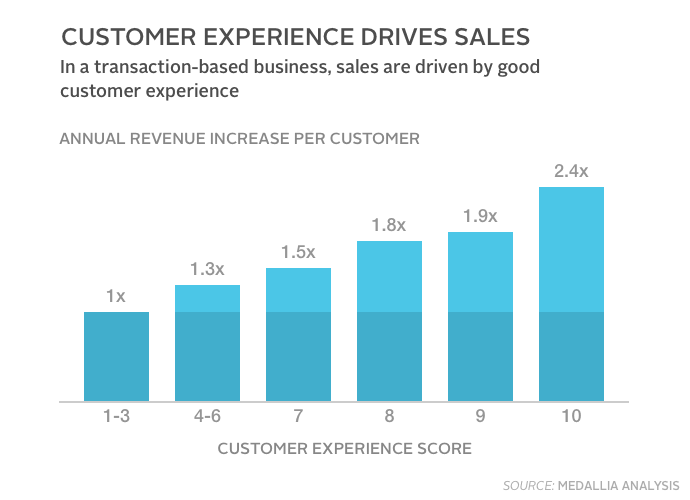
Outside of making a great product (I’ll leave that part to you), there are some best practices you can employ to ensure you retain users for your SaaS product:
- Reduce barrier to renewal: Maximize LTV by using auto-renewal when possible.
- Offer yearly pricing options, since yearly payments are more guaranteed than monthly contracts.
- Use live chat software and other forms of customer support. 96% of customers say that customer service is important in their choice of loyalty to a brand. When it comes to your largest customers, you should pull out all the stops to ensure they have an incredible experience.
- Go upmarket: Customers that work for companies are more likely than regular consumers to whip out their credit cards again and again. It’s much easier to pay for something when it’s on the company card and not on your personal card, right?
- Finally, I strongly believe in user onboarding. Properly onboarded users tend to churn less and stick around longer, because they know how to optimally use your product. A great product onboarding tool can make all the difference.
Looking to grow your SaaS? Onboard users better and reduce churn with Hopscotch.
Maximize ARPU for your SaaS business
Average revenue per user, or ARPU, is one of the most important metrics in all of business. Sophisticated companies and B2B companies alike have entire teams devoted to maximizing ARPU through careful optimization/analysis and up-sells.
Calculating ARPU is fairly straightforward. It’s simply the amount of revenue you make per user.
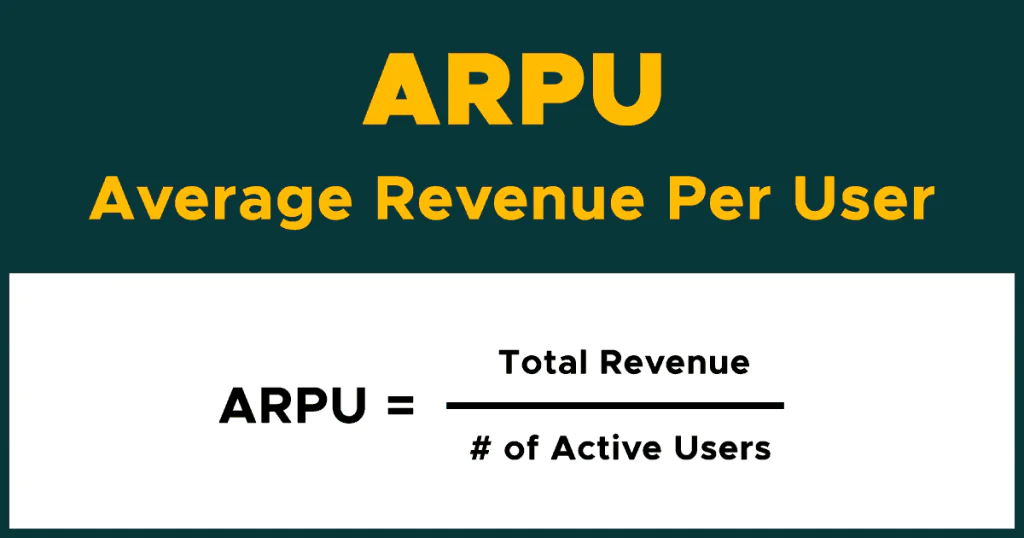
ARPU in the context of SaaS businesses used to evaluate the performance of factors such as your pricing, your messaging, and the effectiveness of the channels you’re using to reach customers. The better you optimize all those things, the more money you make per user in a given period.
These are the best ways to maximize your ARPU:
- Direct sales: As I said, direct sales usually yield high value customers. The personal touch of direct sales gives customers comfort in your product, process, and customer support, which makes them more likely to shell out for a higher pricing tier.
- Acquisition channel optimization: You may notice some channels — SEO, Google Ads, direct sales, etc. — yield higher value customers than others. Invest in a CRM or at least some sort of tracking software so that you can discern which channels produce the most valuable customers.
- Price testing: Good SaaS companies are always price testing! You can almost always charge more for your product and price test. Famous venture capitalist, Marc Andreesen says his number 1 tip for startups is: “raise prices.” Higher prices means you can afford to spend more on sales and marketing, which produces more leads, and thus, more revenue.
- Upsells: If you’re creating new features for your product, always focus on the best, highest paying customers first. Find out what your best customers will pay more for. That’s usually a good indicator of what you should build next.
Conclusion
Nobody ever said building a SaaS business was easy.
But if you distill it down to three major metrics: acquisitions, retention and ARPU, you’ll have a much better handle of the drivers of your business. Doing this enables you to identify weaknesses and areas of focus.
Also remember: this has been done before. There are over 15,000 SaaS businesses out there (an underestimate in my opinion). So always talk to industry experts, read and learn all the time. The equation isn’t terribly difficult, but the devil is in the details.
Build a great product that delights and retain users. Then find the distribution (marketing) channels that work. Easy enough, right?
Good luck!
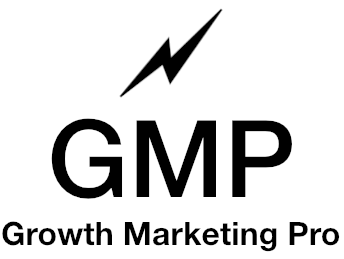
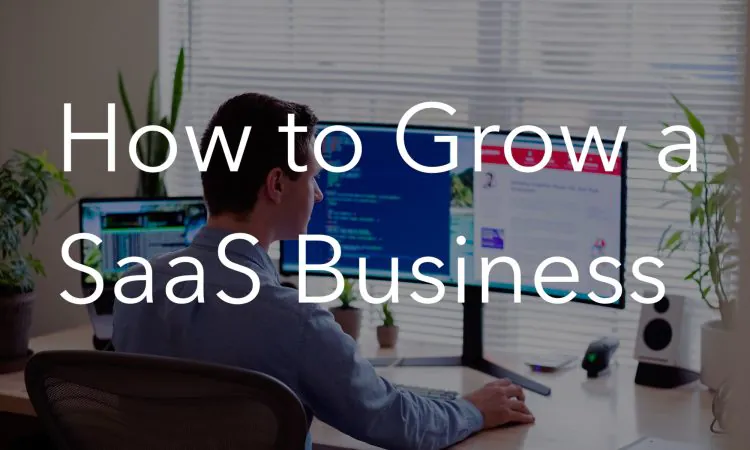
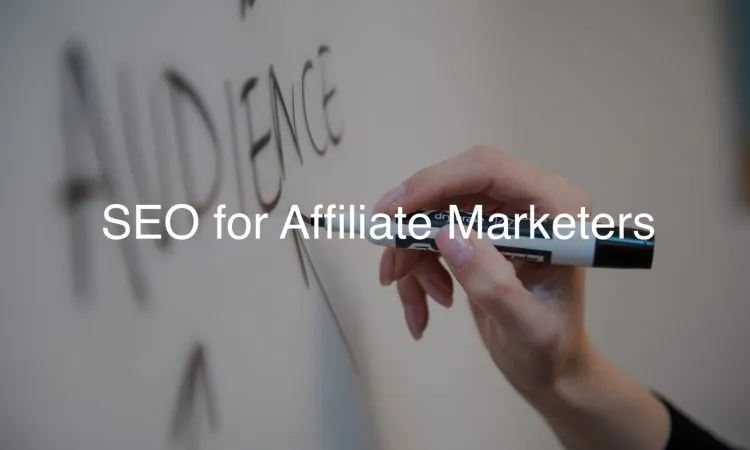

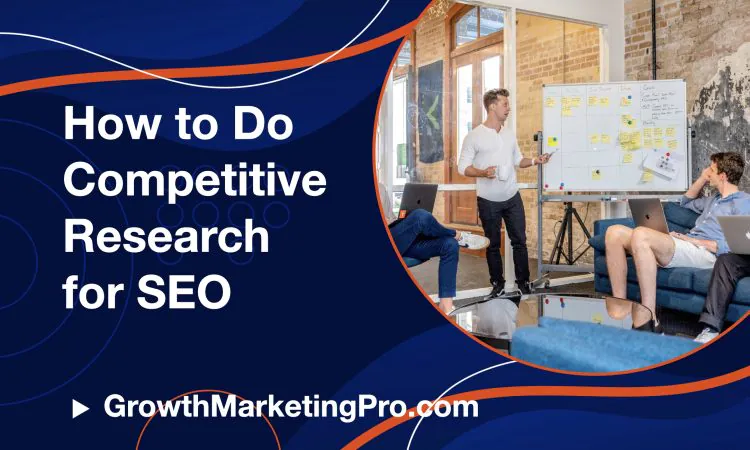
Lovely very nice.